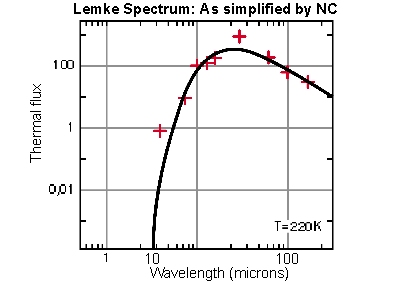Solar System
Water throughout the universe!
Because of the Earth's atmosphere acting as an opaque screen, only with ISO have astronomers been able to study the chemistry of the Universe in detail. One of the most mind-boggling discoveries they've made is that there's a lot of water vapour in the universe.
Indeed, ISO found the telltale signature of water in starforming regions; in the vicinity of stars at the end of their lives; in sources very close to the galactic centre; in the atmospheres of planets in the Solar System. On the whole, scientists estimate the total amount of water in our own galaxy to be millions of times the mass of the Sun.
- In the giant planets' atmospheres
There is gaseous water, for instance, in the upper atmospheres of the giant planets. On average, Jupiter, Saturn and Uranus are showered by 10 kilograms of water per second. The problem is scientists do not know where this water vapour comes from. Maybe from deeper in the planetary atmospheres? This is not very likely because water vapour coming from evaporating oceans would freeze into clouds when reaching the cold outer parts of the atmospheres, a very common process here on Earth. An outside source -maybe tiny frozen comet nuclei pummelling on the atmospheres- is therefore a much more likely explanation. - On Titan
The detection of water vapour in Titan's atmosphere -Saturn's biggest moon- will surely help to solve the problem mentioned above. Scientists will now be able to better understand the chemical processes taking place in this cold moon, maybe only just too cold to bear life.
Water vapour in Titan's atmosphere. ESA/ISO SWS spectra Coustenis/Salama et al., on Voyager 2 (NASA) image
In addition, valuable data retrieved and sent back by the Huygens probe during its descent to the moon's surface on 14 January 2005, will also help to gain further insights into Titan's atmosphere.
ISO's analysis of Comet Hale-Bopp
 |
|
Spectrum covering a huge range of infrared wavelengths from ISO's photometer ISOPHOT. Here the instrument operates as a thermometer, taking the temperature of the comet's dust cloud. The crosses are the measurements by ISOPHOT and the continuous line is the emission expected from an object with a temperature of 220 Kelvin, or about minus 50 °C. By this period of observation in October 1996, the dust cloud was much warmer than in March 1996, when the same instrument obtained a temperature of minus 120 °C. |

